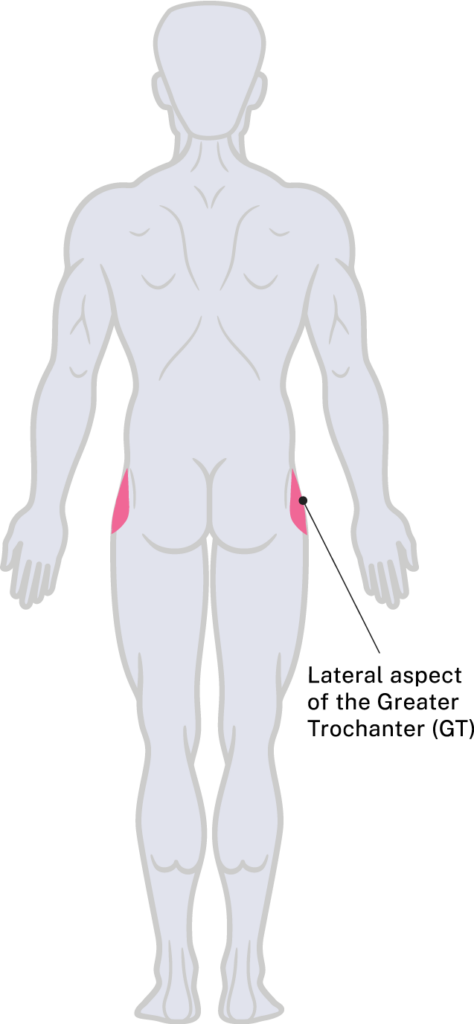Lateral aspect of the greater trochanter
Specific risks
Side lying
Pressure injuries to the lateral aspect of the greater trochanters are most likely to occur when side-lying due to:
- muscle wasting of the lower limbs.
- impaired sensation.
- impaired mobility.
- use of a suboptimal mattress.
- bottoming out between air cells on a pressure relieving mattress.
- lying on incontinence sheets or pads.
- moisture from sweating or incontinence.
Sitting
When seated in a wheelchair (power, manual or showerchair) the lateral aspect of the greater trochanter may contact the tyres or side guards. The risk of this occurring is increased by weight gain or external rotation of the legs. This may also occur if the person with spinal cord injury has a pelvic obliquity which can cause ‘drifting’ of the pelvis to one side of the wheelchair.
Transfers
- Slings that are ill-fitting, wet or textured can contribute to pressure, shear and friction.
- Side-ways ‘dragging’ during horizontal transfers can cause shear and friction over the greater trochanters.
These areas should be assessed by palpating for ‘boggy’, soft, or tender areas.

Management of breakdown
- Identify contributing factors, including mattress and cushion quality, showering aids, other seating surfaces, transfer techniques, clothing, muscle bulk, care routines, and continence management.
- Explore the potential to continue sitting while offloading the wound, where clinically appropriate. This should include:
- Assessment of wound location and any contact with seating surfaces, including consideration of underlying sinus tracts. If there is any suspicion that pressure is being applied to an underlying cavity, complete bed rest is recommended.
- Postural assessment in both lying and sitting
- Review of wheelchair dimensions to ensure appropriate fit and support
- Assess bed positioning and the quality and appropriateness of the mattress. Optimal offloading positions include supine, prone, or side-lying off the wound.
- When using a hoist, assess whether the sling contacts the wound site and whether alternative sling options are needed.
- Stage 3 or 4 pressure injuries may require surgical consultation for further management.
For urgent consultation
On-call Consultant Spinal Injuries Unit,
Princess Alexandra Hospital Ipswich Road,
Woolloongabba, Queensland.
Switch: (07) 3176 2111
Ask for the SIU Registrar on business days or an on-call SIU Consultant during after-hours for the Spinal Injuries Unit.
For a review at the Spinal Injuries Unit outpatient department
Referrals can be faxed through the central intake hub on 1300 364 248.
To link with community services
Contact Spinal Outreach Team at 3176 9507 or spot@health.qld.gov.au
Check out other pressure injury locations and learn how to manage them.